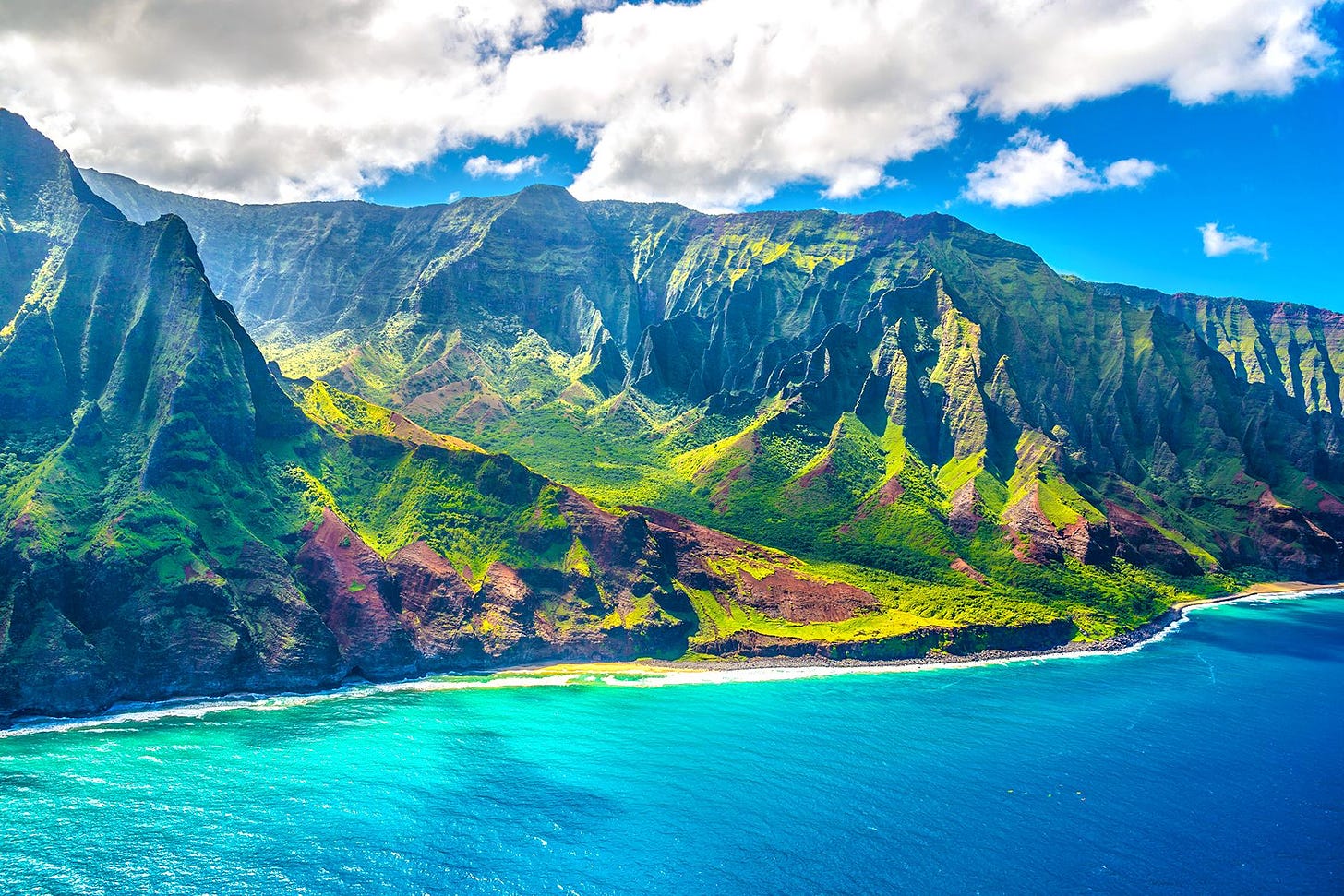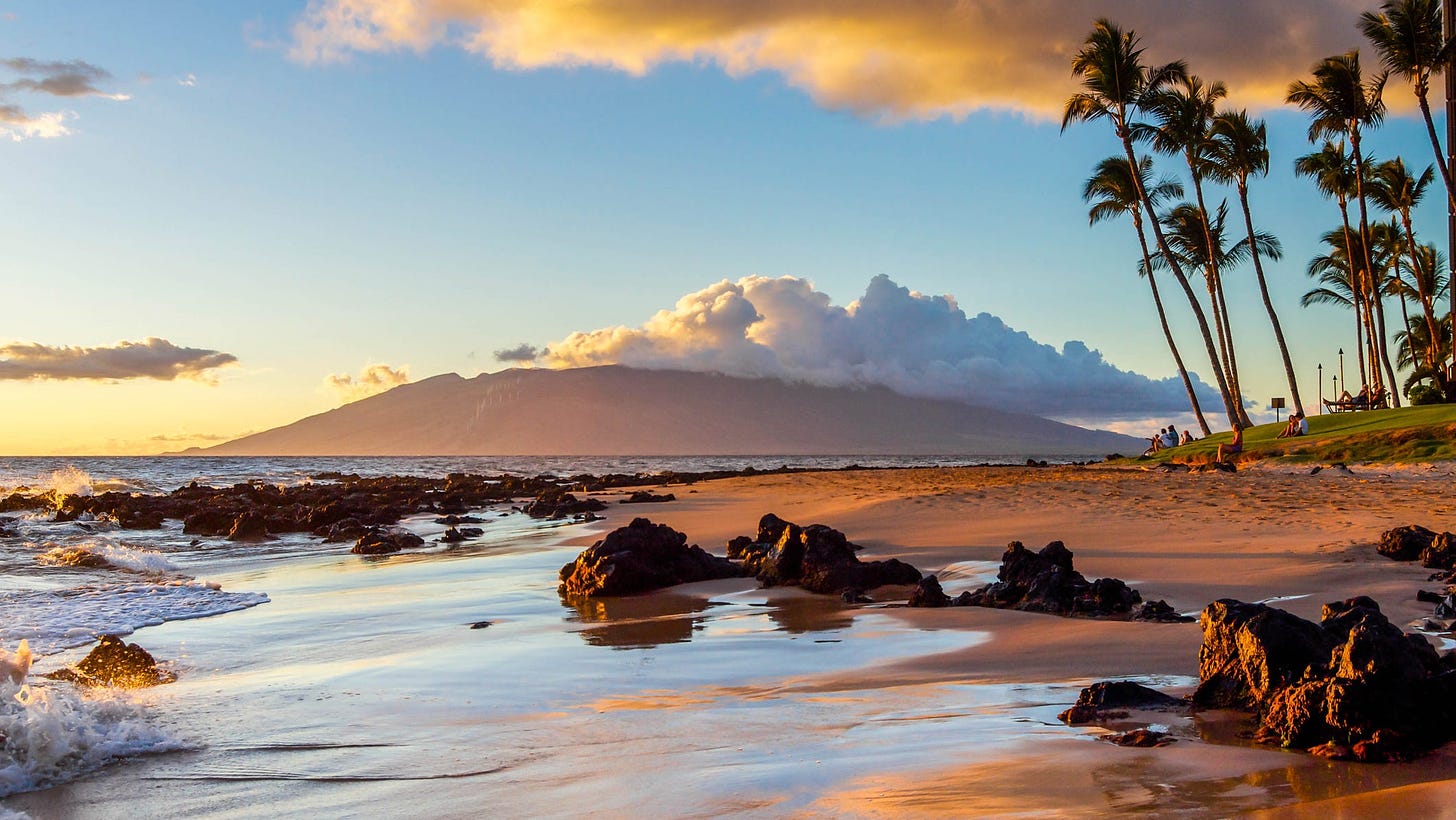Imagine a place where it is never too hot or too cold, but always "the right thing." With warm and mild trade winds, comfortable temperatures and sunny skies, Hawaii is the ideal holiday destination all year round.
In general, a bikini, top, and shorts are all you need, but when walking along the beach in the evening, you might want to wear a light jacket.
Someone might think that being a meteorologist here is boring, but in fact it is not. In the evening, on local news, you will hear information about ebb and flow, wind, detailed information for surfers on each part of the islands, rainfall statistics and other information.
The Hawaiian Islands are an amazing place of contrasts. The climate here is very different, thanks to the varied landscape. For example, on the island of Hawaii, also known as the Big Island, you can swim and sunbathe on the beach and ski from the top of Mauna Kea on the same day! Mountains that stretch up to 4,205 meters above sea level and contain climates ranging from tropical to sub-arctic. In general, the weather on the islands is pleasant and never monotonous.
This climate is very pleasant for long stays in Hawaii. To choose a good accommodation in Hawaii, you can contact the HawaiiTrustedRealty service hawaiitrustedrealty.com, there are many housing options. Without leaving your computer, you can choose accommodation in which you can settle during your stay in Hawaii.
Climatic zones
Hawaii boasts 11 of the 13 climate zones, each with a unique ecosystem and weather patterns. Factors such as altitude, atmospheric pressure, rainfall, winds and topography form special areas on all islands. The climate you will encounter in Hawaii includes humid tropical zones (starting at 137 m above sea level), arid and semi-arid zones, the warmest parts of the islands, temperate zones (400-500 m above sea level) and high altitude zones. (cool at 3200 m).
Make sure you are adequately prepared if you are going to the mountains or going to conquer volcanoes. Typically, the decrease in temperature is about 3.5 degrees Fahrenheit for every 305 meters in height. Each of the Hawaiian Islands has four main climatic zones - desert, rainforest, temperate and tundra, so no matter where you stay, you will have the opportunity to see amazing climatic diversity.
Seasons
Hawaii has only two seasons - summer, from May to September, and winter, from October to April. The early Hawaiians called them kau, the warm season (when the sun is almost directly overhead and the northeastern wind blows) and hoolio, the cool season (when the sun is lower on the horizon and the wind is more volatile and more rainstorms).
Winters are several degrees cooler and more humid. The average temperature on the islands is about 27C, decreases during the winter months to 24C (cooling by another 5.5C after sunset). The highest air temperature in summer is about 29C, in winter - 26C. June and July are usually the driest months on the islands. Even in winter, the rains and clouds periodically dissipate and you get enough sun.
Time zones
Hawaii has its own time zone, which is called accordingly - "Hawaiian Standard Time". In Hawaii, the clock is not set to winter or summer time. The time difference with the West Coast of the United States is 3 hours in winter and 2 hours in summer, with the East Coast - 5 and 6 hours, respectively.




